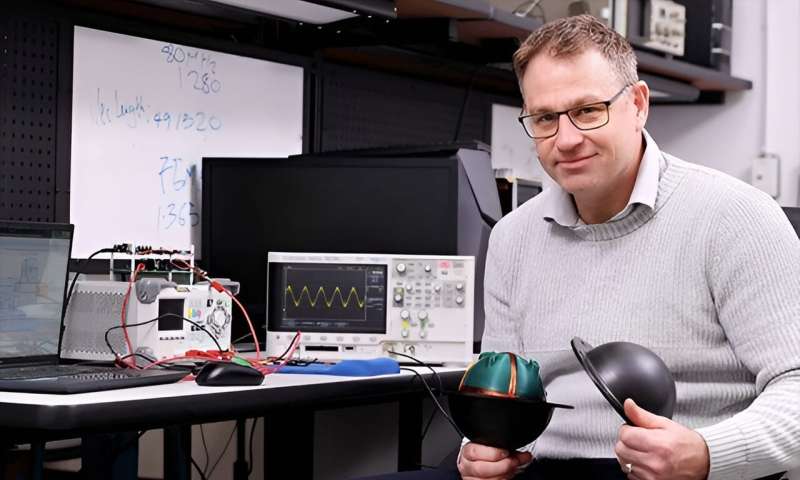Building a communications network to monitor the world's wildest ocean

Ice. Saltwater. Remote locations. Building a communications network to study environmental conditions in the harsh North Atlantic comes with its challenges.
Dalhousie Engineering Professor Dr. Jean-François Bousquet, associate scientific director of the Ocean Frontier Institute's (OFI) Transforming Climate Action research program, is optimistic about meeting those challenges.
Dal-based OFI is carrying out the most intensive investigation ever undertaken into the ocean's role in climate change. Part of the project involves developing a network called the North Atlantic Carbon Observatory, studying the western North Atlantic to "understand and mitigate the impact of climate changes on the ocean, which is a major carbon sink," says Dr. Bousquet.
Surface tension
There are major challenges to collecting data in that environment though: "It's a chaotic area of the ocean. The surface does destroy your equipment. You want to keep your equipment below the surface. It's safer down there, and it's going to last longer."
The team is looking to potentially deploy drones to collect data underwater between an area near Iqaluit and the Greenland coast. Communicating underwater is feasible—low-frequency acoustics are very reliable. But Dr. Bousquet, an expert in low-power underwater communications, notes that data "cannot cross the water interface. Whatever goes underwater, stays underwater."
The solution? A "quantum enhanced magneto-inductive communication link that's going to be able to cross the ice in the Arctic." The system works by using magnetic fields to communicate between the drones and active nodes at the surface. It also will allow underwater buoys covered by ice to communicate their findings when they are unable to reach a satellite link.
"The network we're trying to establish includes experts in sensing, experts in platforms, and autonomous systems, and in modeling," he says. "So, with this big team, we can actually achieve our objective of being able to acquire the data and extract meaningful conclusions out of it."
Getting creative
With plans to grow to more than 170 researchers, OFI will have plenty of opportunities for grad students. But Dr. Bousquet is also committed to giving undergrads the opportunity to solve real-world problems. Second-year students in his design course "are learning to develop micro-electronic systems and use cases related to the ocean," he says.
In conjunction with the ocean climate monitoring project, students work on building a variety of monitoring technologies, such as anemometers, wind vanes, flow meters, and an array of sensors.
"We're asking them to be creative," he says. "We're asking them to solve an important problem in the world. It puts them a little bit out of their comfort zone. They have to do research on their own, and they usually come up with really original solutions, and they all come up with a design that will solve a piece of the puzzle."
Provided by Dalhousie University